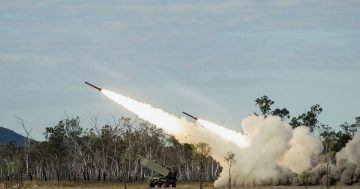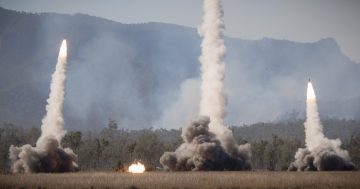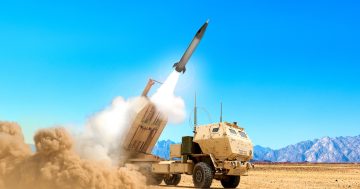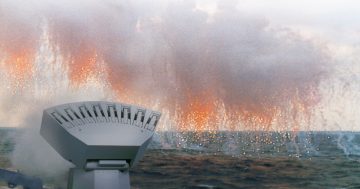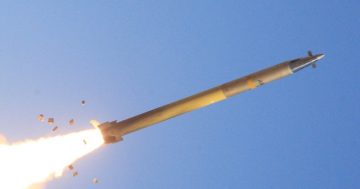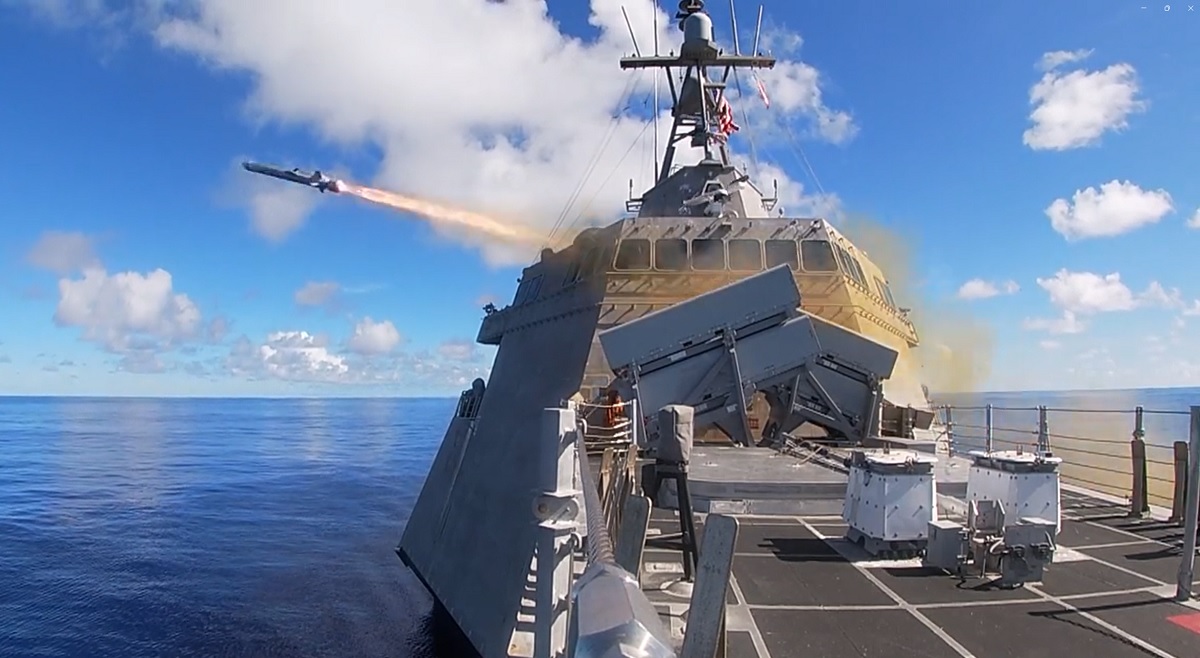
A US Navy Naval Strike Missile (NSM) being fired from its launcher canister. Photo: US Navy.
Two companies have announced this week that they will assemble or manufacture elements of precision-guided missile systems in Australia, as the government’s ambitious goals of establishing Sovereign Guided Weapons and Explosive Ordnance (GEWO) capabilities start to bear fruit.
Following the announcement on 21 August that the Australian Defence Force will acquire a number of missile systems for all three services, Rafael Australia announced it had finalised a contract with the Commonwealth to manufacture its Spike LR2 anti-tank guided missile in Australia.
The Spike LR2 will equip the Australian Army’s Boxer 8×8 Combat Reconnaissance Vehicle (CRV), and Rafael says the missiles will be manufactured in Australia by the joint venture Varley Rafael Australia. The missile was actually selected by the army in September 2018, but at that stage any local manufacturing plans were immature.
Rafael describes the Spike LR2 as a “state-of-the-art, multipurpose, multiplatform, combat-proven missile system, designed to meet the needs of modern warfare and complex battlespace challenges”. The missile has a beyond-line-of-sight range of about 5 km, and can destroy armoured vehicles and buildings.
“Through our joint venture with the Varley Group, Varley Rafael Australia (VRA), RAFAEL Australia is optimally placed to enhance the ADF’s ‘speed to capability’ acquisition, and pursue opportunities to stand up domestic manufacture of selected defence capabilities in Australia for our warfighters and pacific partners,” Rafael Advanced Defense Systems’ Executive Vice President Dr Ran Gozali said in a 21 August release.

The CEO Varley Rafael Australia Ben Walter and the Head GWEO Air Vice-Marshall Gerald van Leeuwen sign the Spike LR2 agreement, while the MD of Rafael Australia Golan Ben-Giat looks on. Photo: ADF.
Just two days later, South Australian company AEROBOND announced it had been selected by KONGSBERG to manufacture launcher canisters for the latter’s Naval Strike Missile (NSM), which was selected in 2022 by the Royal Australian Navy to equip its ANZAC class frigates and Hobart class destroyers.
Under the agreement, AEROBOND will manufacture the NSM launcher canisters in a new purpose-built facility in Adelaide from January 2024.
“The contract with KONGSBERG is a recognition of the deep skills, experience and expertise that we have cultivated within AEROBOND and across our workforce,” AEROBOND’s Founder and Managing Director Justin Struik said on 23 August.
Kongsberg Defence Australia’s General Manager John Fry added, “We are very pleased to have awarded this important contract to AEROBOND. Australia is home to a very talented an innovative defence industry, and KONGSBERG is committed to growing our network of local suppliers and providing manufacturing opportunities as part of our work program with the Australian Defence Force.
“This contract also supports the ongoing development of a Sovereign Guided Weapons and Explosive Ordnance Enterprise for Australia,” he added.
The GWEO Enterprise was established by the former LNP Government in March 2021 under then Defence Minister Linda Reynolds, but quickly received bilateral support. The new Labor Government retained the concept, and its goals were reinforced by the authors of the April 2023 Defence Strategic Review.
In May, the government appointed a chief of the newly formed GWEO Group, and undertook to accelerate the establishment of a local long-range guided weapons and munitions manufacturing industry here in Australia.
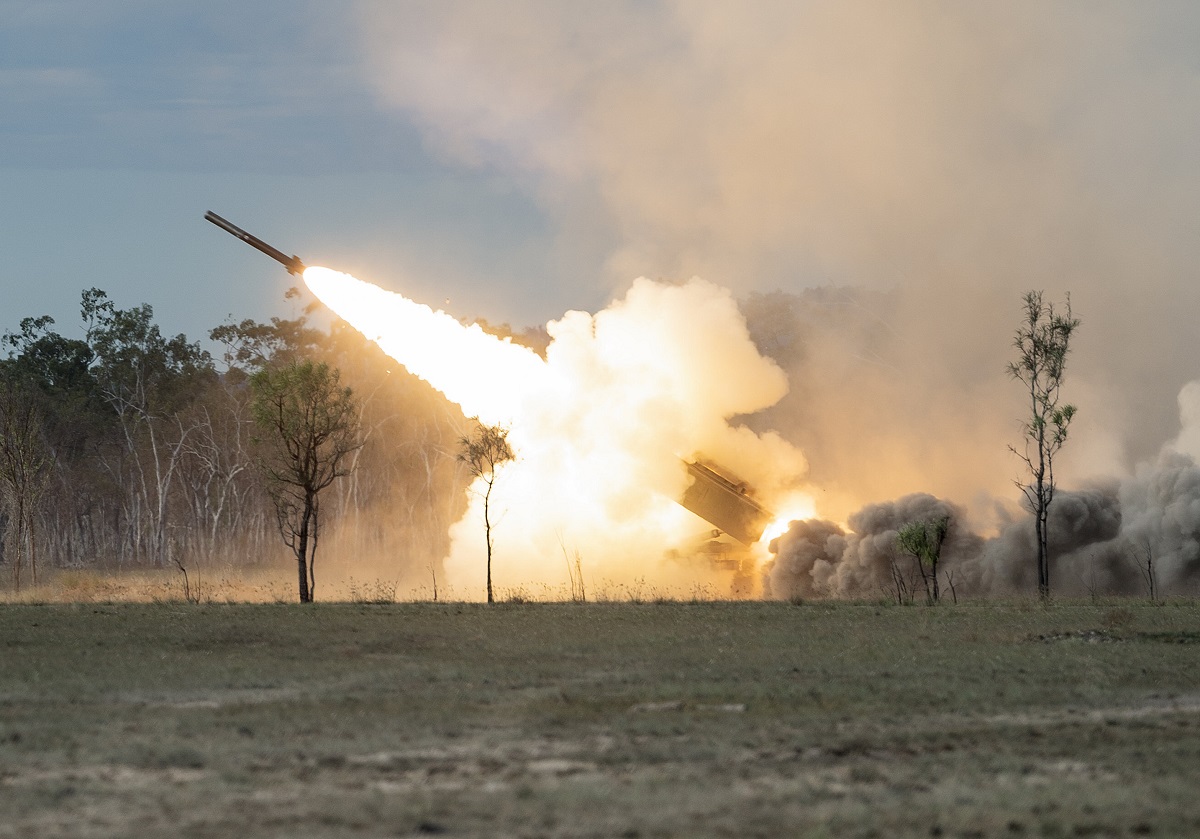
Its is hoped more and more elements of the HIMARS’ GMLRS rockets can be manufactured in Australia from early 2025. Photo: ADF.
But the stated goal to commence the manufacturing of guided weapons in Australia within two years will still be a difficult one to achieve. While Spike LR2 assembly can be directly transplanted into an Australian setting, it may not initially be possible to manufacture some elements locally.
The same can be applied to larger systems such as the Guided Multiple Launch Rocket System (GMLRS) rockets fired by the Lockheed Martin M142 HIMARS systems being acquired by the Australian Army.
While the longer term goal to manufacture these missiles locally is a sensible one, any initial manufacturing work is likely to be comprised of things like precision machined parts, wiring looms, composites, transport and storage containers, and other discreet elements, while the warheads, rocket motors, software and sources codes, and guidance systems will initially be imported for local assembly.
There are also many complex releasability issues, security certifications and WH&S policies to be considered and addressed for the local handling and manufacture of explosives and propellants.












